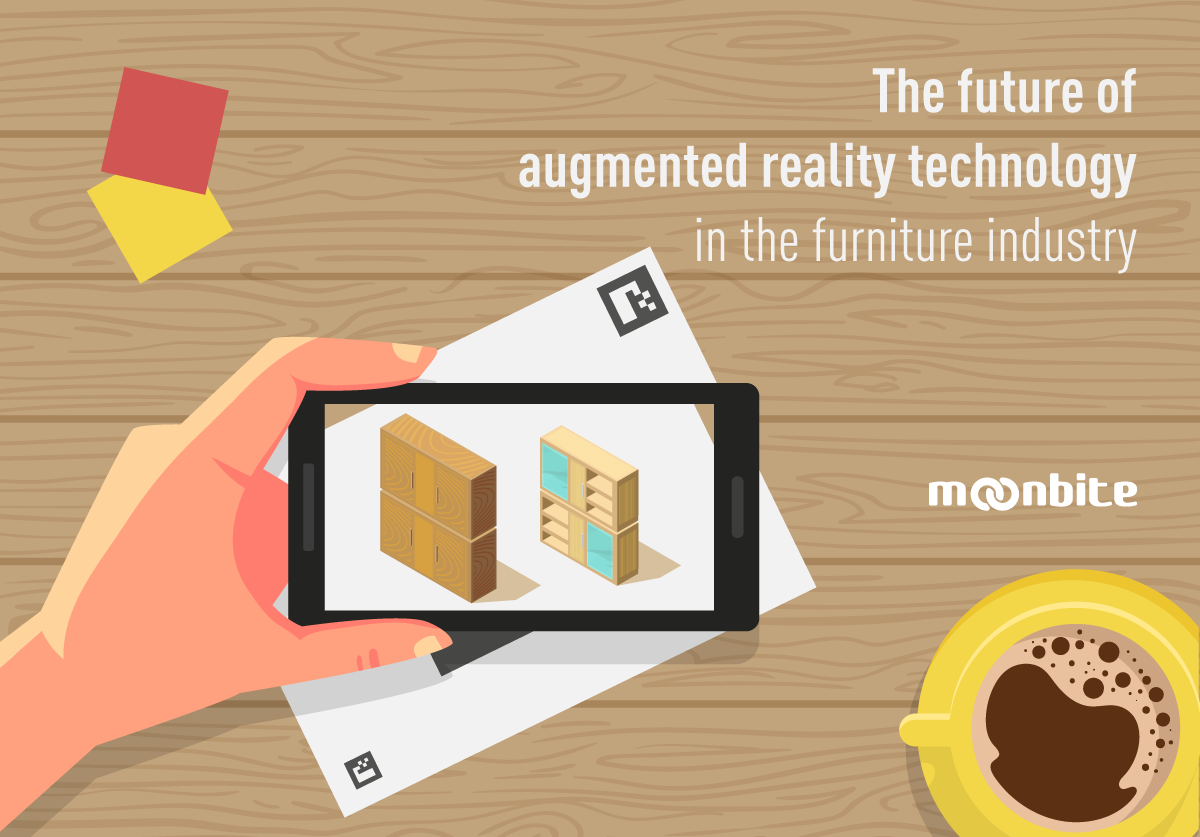The future of augmented reality technology in the furniture industry
As more and more customers are moving online to make different purchases, businesses need to follow them. For the furniture industry, this can be a little bit challenging as furniture buyers are not used to shopping online. Yet, thanks to new technologies, the transfer from offline sales to online, even taking into account the large sized products, is much easier than it was five years ago.

Augmented reality (AR) is a way of combining virtual objects with real-life surrounding using the mobile device camera. Technology allows merging digital and real worlds to bring users a completely new experience. AR can enrich the live environment with digitally created sounds, images, and videos.
Nowadays this technology is used in entertainment, games (remember the buzz around Pokemon Go?), retail, and even medicine. It helps manufacturers present their products in a better way without the need for users to visit the store or turn an in-store visit into an engaging game. Augmented reality used in commerce and retail delivers personalized shopping experience and engages customers increasing the likelihood of purchase. Furniture, on the other hand, is a big investment and giving customers the opportunity to “try out” virtual pieces in their own home is a huge advantage for the manufacturers and the retailers.
Benefits of implementing AR technology
For furniture buyers, AR apps can be very helpful during the purchasing process. The availability of such apps allows customers to put furniture directly in their home using their phone or tablet. Customers can personalize elements of the décor they are planning to buy and see if they fit their overall interior design. This combined with the suitable delivery options helps to decrease the number of returns and increase customers satisfaction with the purchase.
AR technologies also allow creating photorealistic 3D renderings of products customers already have and the elements they want to buy. It makes buying much easier for the customers and helps retailers to showcase their products interactively.
Additionally implementing an AR technology allows manufacturers and distributors to get ahead of the competition. Despite the fact that most lead companies are already using the AR, a lot of smaller ones are not. It creates a niche in the industry that you can use to improve the experience of your customers and to attract new ones.
How IKEA used AR in an IKEA Place app
One of the most known AR apps in the furniture industry is without the doubt IKEA Place. Based on the older IKEA Catalogue app the new one allows customers to place true-to-scale 3D furniture models in the home. The products look so real that users can walk around and see them from different angles. The app works by scanning the area where the furniture will be placed then using that information to adjust the size of the element to the selected space. Thanks to the app, users can avoid situations where the new furniture doesn’t fit or match the rest of the furniture.
AR apps help to solve one major problem – some customers are not confident enough about buying furniture online. And the AR solves this by letting them “try before you buy” interior elements. By combining usefulness and entertainment the technology also gives companies new ground for promoting and presenting their products as well as improving their customers experience with the brand.


